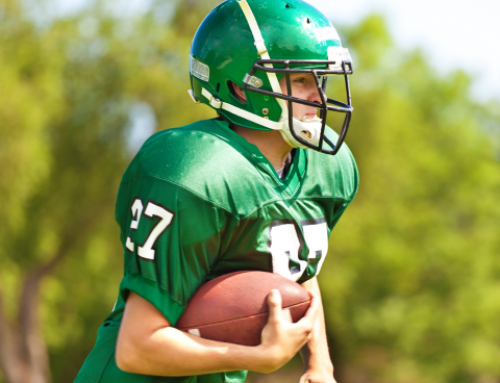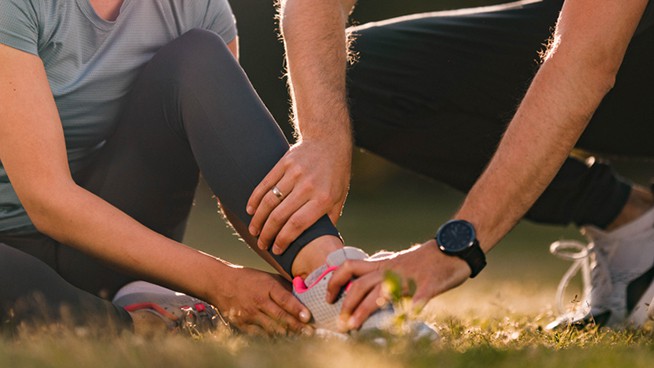3 Unconventional Tips to Getting the Most Out of Your Knees
No matter what sport you play, you rely on your knees. Keeping them healthy is important not only for turning your body into a high-performance machine but also for sustaining a long athletic career. Use these tips to reduce knee pain, enhance training and improve on-field performance.
Types of Injuries
Injuries can be either chronic—persisting over time, like tendonitis or arthritis—or acute—occurring from a single event. Acute knee injuries are usually followed by crippling pain and require immediate medical attention. Chronic injuries are easily ignored, especially among athletes. But, beware: if not treated, manageable issues like tendonitis (inflammation) can progress into tendinosis (degrading tissue).
The following tips are for those with chronic, not acute, issues. That said, let’s look at ways to reduce knee pain so you can keep your joints healthy for many years to come.
Reason for Injury
Most chronic knee pain involves the patellar tendon—the band of tissue connecting the kneecap to the shin below the kneecap. Many athletes with chronic knee pain focus their rehabilitation on the patellar tendon, because that’s where the pain is located. Unfortunately, they don’t usually experience much relief, because they’re focusing on the wrong spot.
Think of the leg as a seesaw, with the knee functioning as the fulcrum in the middle. Anatomically, it’s a complex joint with ligaments that weave every which way to prevent unwanted movement. But functionally, it’s boring. It extends (kicking a soccer ball) and flexes (doing butt kicks), and that’s about it. The true motion of this seesaw depends on what’s on either end—the ankle and the hip.
On top of the seesaw is the hip, a complex joint that can flex, extend, rotate, abduct and adduct. The hip has big, strong muscles attaching, originating and weaving within its structure. On the bottom is the ankle, which can do everything the hip does, including circumduction (a fancy term for the ability to move in just about any direction). Unlike the knee, these two joints have a lot of responsibility, but more responsibility means more risk of small problems. And small problems are more apt to cause chronic pain.
Knee Exercises and Strategies
Since the hip and ankle both affect the knee, our equation for knee health is: Healthy Hips + Healthy Ankles = Healthy Knees. If you suffer from knee pain, try these three unconventional strategies instead of the traditional practice of focusing on the patellar tendon and the quadriceps.
1) Wall Stretches
The rectus femoris is the only member of the quadriceps muscle group that crosses both the hip and knee joint. When athletes spend most of their day sitting down, their hips have a tendency to tighten, which causes the rectus femoris to become hyperactive. Combat this phenomenon by performing the Wall Stretch.

Wall Stretch
2) Cook Hip Lifts
The glutes are the biggest muscles in the body, and the more they do, the less the knee does. Wake them up by performing Cook Hip Lifts.

Cook Hip Lift
Do 10 repetitions between stretching sets. Perform a right leg stretch for one minute, then 10 right leg Cook Hip Lifts. Then perform a left leg stretch for one minute, followed by 10 left leg Cook Hip Lifts. Repeat cycle two times per session and complete two sessions per day.
3) Barefoot Shoes
Barefoot shoes are popular because they promote a forefoot strike, which allows the muscles and arch of the foot to absorb more of the force going through the leg. When the heel crashes to the ground, the force bypasses the foot and shoots up the leg, overloading the knee.
- adiPure Trainer Shoes
Start doing your warm ups and light jogs in minimalist footwear, like the adidas adiPure Trainers, to get used to a forefoot strike. Once you build strength in your feet, move on to high-intensity agility and sprint drills.
Anthony Mychal is a writer, athlete consultant, teacher and coach. He has a B.S. in health and physical activity and an M.S. in health and physical education; and he studied under James Smith and Buddy Morris at the University of Pittsburgh. In his free time, he publishes a blog with his musings on athletic preparation at anthonymychal.com.
RECOMMENDED FOR YOU
MOST POPULAR
3 Unconventional Tips to Getting the Most Out of Your Knees
No matter what sport you play, you rely on your knees. Keeping them healthy is important not only for turning your body into a high-performance machine but also for sustaining a long athletic career. Use these tips to reduce knee pain, enhance training and improve on-field performance.
Types of Injuries
Injuries can be either chronic—persisting over time, like tendonitis or arthritis—or acute—occurring from a single event. Acute knee injuries are usually followed by crippling pain and require immediate medical attention. Chronic injuries are easily ignored, especially among athletes. But, beware: if not treated, manageable issues like tendonitis (inflammation) can progress into tendinosis (degrading tissue).
The following tips are for those with chronic, not acute, issues. That said, let’s look at ways to reduce knee pain so you can keep your joints healthy for many years to come.
Reason for Injury
Most chronic knee pain involves the patellar tendon—the band of tissue connecting the kneecap to the shin below the kneecap. Many athletes with chronic knee pain focus their rehabilitation on the patellar tendon, because that’s where the pain is located. Unfortunately, they don’t usually experience much relief, because they’re focusing on the wrong spot.
Think of the leg as a seesaw, with the knee functioning as the fulcrum in the middle. Anatomically, it’s a complex joint with ligaments that weave every which way to prevent unwanted movement. But functionally, it’s boring. It extends (kicking a soccer ball) and flexes (doing butt kicks), and that’s about it. The true motion of this seesaw depends on what’s on either end—the ankle and the hip.
On top of the seesaw is the hip, a complex joint that can flex, extend, rotate, abduct and adduct. The hip has big, strong muscles attaching, originating and weaving within its structure. On the bottom is the ankle, which can do everything the hip does, including circumduction (a fancy term for the ability to move in just about any direction). Unlike the knee, these two joints have a lot of responsibility, but more responsibility means more risk of small problems. And small problems are more apt to cause chronic pain.
Knee Exercises and Strategies
Since the hip and ankle both affect the knee, our equation for knee health is: Healthy Hips + Healthy Ankles = Healthy Knees. If you suffer from knee pain, try these three unconventional strategies instead of the traditional practice of focusing on the patellar tendon and the quadriceps.
1) Wall Stretches
The rectus femoris is the only member of the quadriceps muscle group that crosses both the hip and knee joint. When athletes spend most of their day sitting down, their hips have a tendency to tighten, which causes the rectus femoris to become hyperactive. Combat this phenomenon by performing the Wall Stretch.

Wall Stretch
2) Cook Hip Lifts
The glutes are the biggest muscles in the body, and the more they do, the less the knee does. Wake them up by performing Cook Hip Lifts.

Cook Hip Lift
Do 10 repetitions between stretching sets. Perform a right leg stretch for one minute, then 10 right leg Cook Hip Lifts. Then perform a left leg stretch for one minute, followed by 10 left leg Cook Hip Lifts. Repeat cycle two times per session and complete two sessions per day.
3) Barefoot Shoes
Barefoot shoes are popular because they promote a forefoot strike, which allows the muscles and arch of the foot to absorb more of the force going through the leg. When the heel crashes to the ground, the force bypasses the foot and shoots up the leg, overloading the knee.
- adiPure Trainer Shoes
Start doing your warm ups and light jogs in minimalist footwear, like the adidas adiPure Trainers, to get used to a forefoot strike. Once you build strength in your feet, move on to high-intensity agility and sprint drills.
Anthony Mychal is a writer, athlete consultant, teacher and coach. He has a B.S. in health and physical activity and an M.S. in health and physical education; and he studied under James Smith and Buddy Morris at the University of Pittsburgh. In his free time, he publishes a blog with his musings on athletic preparation at anthonymychal.com.













